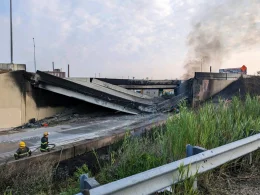In recent developments, Israel has been experimenting with a strategic plan known as the ‘bubbles’ initiative to manage the postwar landscape in Gaza. This approach aims to create secure, autonomous zones within the Gaza Strip where civilians can live free from Hamas influence. This article provides an in-depth analysis of the ‘bubbles’ plan, its potential implications for Gaza, and compares it with alternative strategies for rebuilding and managing the region.
Overview of the ‘Bubbles’ Plan

Concept and Objectives
The ‘bubbles’ plan proposes the establishment of isolated zones within Gaza, which would be free from the presence and control of Hamas, the militant group that has governed Gaza since 2007. The primary objective is to create environments where civilians can live and thrive without the constant threat of militant activities. These zones, or ‘bubbles,’ are intended to be protected by stringent security measures and managed by local authorities or international bodies, depending on the specific design of each bubble.
Implementation Strategy
To implement this plan, Israel envisions several key steps:
- Secure Zone Creation: Designating specific areas within Gaza to be transformed into secure zones.
- Infrastructure Development: Building necessary infrastructure to support civilian life in these areas, including housing, schools, and healthcare facilities.
- Security Measures: Establishing robust security frameworks to ensure these zones remain free from Hamas interference.
- International Cooperation: Collaborating with international organizations to provide oversight and support in managing these zones.
Analysis of the ‘Bubbles’ Plan
Potential Benefits
Enhanced Security
One of the main advantages of the ‘bubbles’ plan is the potential for increased security. By creating controlled environments where Hamas influence is minimized, these zones could offer safer living conditions for civilians. The reduction in militant activity within these areas might lead to lower casualties and a more stable living environment.
Economic Development
With security ensured, economic development could be fostered within the ‘bubbles.’ Investment in infrastructure and services could boost local economies, create job opportunities, and improve overall living standards. This economic improvement might also contribute to a more stable and self-sufficient Gaza.
Humanitarian Relief
The establishment of secure zones could facilitate the delivery of humanitarian aid and services. With reduced interference from militant groups, aid organizations might find it easier to operate and provide necessary support to those in need.
Challenges and Risks
Feasibility and Sustainability
The feasibility of implementing and maintaining these ‘bubbles’ is a significant concern. The effectiveness of such zones will depend on various factors, including the ability to enforce security measures and manage the regions effectively. There are also questions about how long these zones can remain free from Hamas influence.
Human Rights Concerns
The ‘bubbles’ plan could raise human rights concerns, particularly regarding the displacement of populations and the potential for creating segregation within Gaza. Ensuring that the rights of all Gazans are respected and that no one is unfairly excluded from these zones is crucial.
Political and Diplomatic Issues
The plan might face opposition from various political and diplomatic fronts. The concept of creating separate zones within Gaza could be seen as divisive and might exacerbate existing tensions. There is also the potential for conflict with international bodies and neighboring countries who may have differing views on the plan.
Comparative Analysis: ‘Bubbles’ Plan vs. Alternative Strategies
Comparative Table
| Aspect | ‘Bubbles’ Plan | Alternative Strategies |
|---|---|---|
| Security | High potential for enhanced security within zones. | Varies; may include comprehensive security measures or broader approaches. |
| Economic Development | Targeted development within secure areas. | Broader economic recovery plans for the entire region. |
| Humanitarian Relief | Easier access and delivery in secure zones. | Depends on overall security and access across Gaza. |
| Feasibility | High complexity; dependent on effective implementation. | May offer more comprehensive or simpler solutions. |
| Human Rights | Potential for segregation and displacement. | May include more inclusive approaches to support all residents. |
| Political Impact | Possible contention and division. | Could vary; may be less controversial or more widely accepted. |
Analysis of Alternatives
- Comprehensive Reconstruction Plan
A broader reconstruction plan for Gaza, involving nationwide infrastructure development and economic aid, could address the needs of all residents rather than isolating specific zones. This approach might promote more inclusive recovery but could face challenges related to security and coordination.
- International Administration
An international administration model, where international bodies manage Gaza’s reconstruction and governance, might offer a neutral approach to ensuring stability and development. However, this could face resistance from local and regional actors and may be difficult to implement effectively.
- Regional Cooperation
Engaging neighboring countries in a cooperative effort to stabilize Gaza and support reconstruction could leverage regional resources and expertise. This strategy might enhance regional stability but would require significant diplomatic negotiations and cooperation.
Conclusion
The ‘bubbles’ plan represents a novel approach to managing the postwar situation in Gaza by creating secure, autonomous zones free from Hamas influence. While it offers potential benefits in terms of security, economic development, and humanitarian relief, it also presents significant challenges and risks related to feasibility, human rights, and political implications.
Comparing the ‘bubbles’ plan with alternative strategies highlights the complexity of the situation in Gaza and the need for a multifaceted approach to ensure effective and sustainable solutions. Each strategy has its advantages and potential drawbacks, and the success of any plan will depend on careful consideration of these factors and effective implementation.
In conclusion, while the ‘bubbles’ plan could offer a promising model for creating safer and more stable environments within Gaza, it must be evaluated in the broader context of regional dynamics and humanitarian needs to achieve lasting peace and development in the region.











